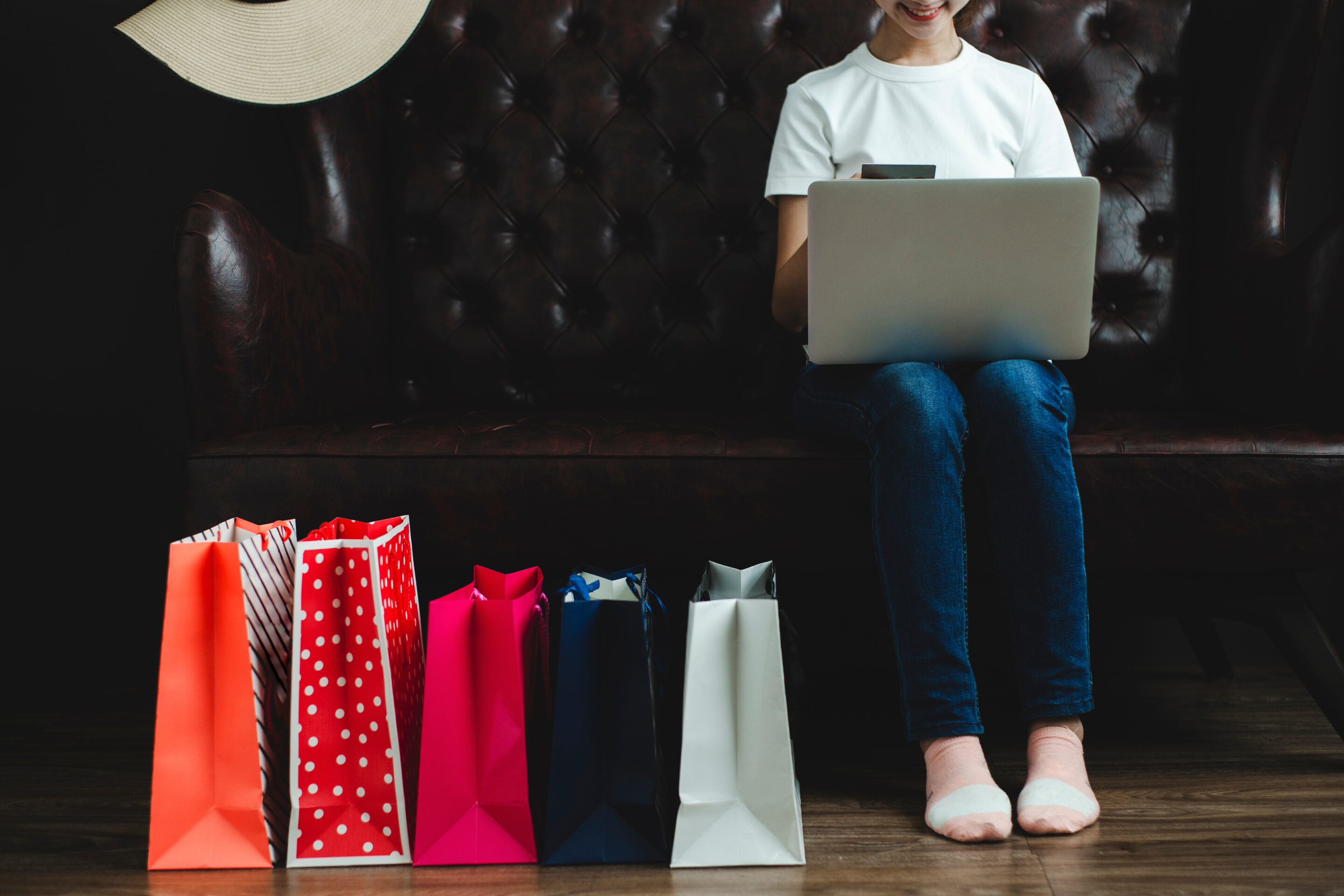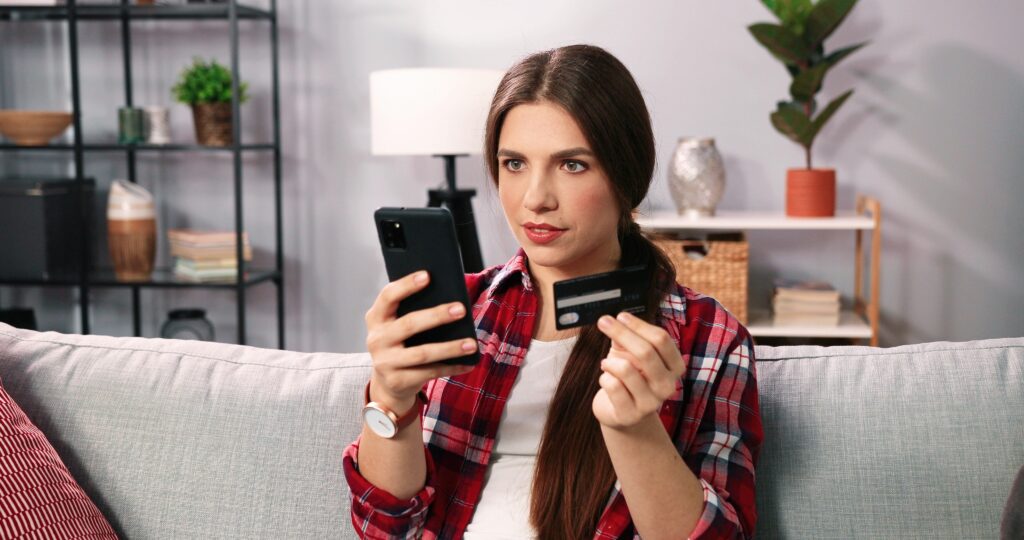“Impulse purchases provide consumers with a sense of immediate gratification, often acting as a stress-reliever or mood-enhancer, thereby establishing a crucial emotional connection with the products or brands.” – Dr. Amanda Reed, Consumer Psychologist.
Impulse buying is an integral part of the retail shopping experience, offering opportunities for retail stores to increase sales. In fact, consumer research shows that the average consumer spends $281.75 per month on impulse buys in 2024 for a twelve month projected total of $3,381.
Successful retail companies such as Walmart, Target and Kroger, emphasize creating an inviting atmosphere or strategically placing tempting items like candy near the checkout area to encourage spontaneous purchases.
Understanding consumer behavior and the factors that drive impulse buys can help retailers develop strategies to optimize sales conversion opportunities.
This article discusses tips, techniques, and strategies brick-and-mortar retail stores can implement to encourage impulse buying and improve sales.
What Are Impulse Purchases?
Impulse buys occur when a shopper purchases an item spontaneously without planning or intention. It is a common shopping behavior that often happens in response to an emotional urge or sudden desire. If you have shopped in the past, it is likely you have bought items on impulse.
Types of Impulse Purchases
There are four types of Impulse buying behaviors: Pure Impulse Buying, Reminder Impulse Buying, Suggestion Impulse Buying, and Planned Impulse Buying.
Pure Impulse Buying
Pure impulse buying occurs when a shopper purchases an item in response to a specific emotion. For example, a shopper might buy a chocolate bar in response to a sudden urge to eat something sweet.
Reminder Impulse Buying
Reminder impulse purchases occur when the shopper notices an item that triggers a memory or reminder. For instance, going to the grocery store to buy milk, walking past toothbrushes, and remembering that you ran out of toothpaste.
Suggestion Impulse Buying
This type of impulse buying happens in response to receiving a message, such as seeing or hearing an advertisement when purchasing a beverage at a convenience store.
Planned Impulse Buying
Planned impulse buying sounds like an oxymoron, but it heavily revolves around discounts, promotions, and items you have already considered purchasing.
For instance, a shopper wandering through a local electronics store sees a laptop they had thought about buying a few weeks earlier and notices that it’s now 50% off.
Why do Shoppers Buy on Impulse?
Impulse buying is driven by a complex set of psychological triggers. The four main ones include:
-
- Shopping enjoyment.
- Fear of losing out
- Discounts or product sales.
- Addictions or habits.
1) Shopping Enjoyment
Shopping enjoyment engenders positive emotions, making customers more receptive to unplanned purchases. For example, the right shopping atmosphere can make shoppers feel happy and entertained; in this state, they are more likely to indulge in spontaneous buying decisions to prolong those feelings.
2) Fear of Losing Out (FOMO)
FOMO creates a sense of urgency for consumers. Time-limited offers, those accompanied by a countdown, and the idea that something can be bought for less than the usual price intensify these feelings.
3) Discount or Product Sale
Sale price influences 88% of impulse buys. Goods on sale make customers think it’s a good deal and a pleasant bonus they can get at a discounted price. Who wouldn’t like it?
4) Addictions Or Habits
When consumers have some habits, like drinking coffee every morning, or addictions, like smoking, they’ll buy all these products unconsciously and twice more often.
Knowledge of these purchasing triggers can help retailers design strategies that encourage spontaneous purchases, enhance customer engagement, improve the shopping experience, and optimize sales.
Consumer Data Regarding Impulse Buying
Studies conducted in 2023-24 by Capital One Shopping Research found that:
-
- 80% of consumers shop impulsively in brick-and-mortar stores, while impulse buying accounts for around 40% of e-commerce.
- 73% of Americans say the majority of their purchases are unplanned.
- The average consumer makes six (6) impulse purchases per month.
- The most common impulse buys were clothes, groceries, and household items.
- 47% of consumers make impulse buys for themselves.
- 39% of consumers are more likely to impulse buy when shopping for necessities.
- 21% of consumers impulse buy for a child, while 16% buy for their spouse or significant other.
How do Top Retailers Encourage Impulse Purchases?
Retailers enhance impulse buying through strategic visual merchandising, placing appealing displays and products in key locations:
Walmart
Walmart uses several subtle marketing and pricing strategies to encourage impulse buying. For instance, by pricing products slightly lower that whole numbers, such as $3.94 instead of $4, they create the illusion of a deal.
Further, rollback pricing ads, combined with well-placed kiosks, draw attention to product discounts and encourage impulse buys.
In addition, the store design has several objectives. It creates a welcoming atmosphere that encourages browsing and a convenient shopping experience that offers many opportunities for impulse purchasing.
Walmart’s store layout includes the placement of bakeries at the entrance, calm or popular music playing continuously, and signs that guide shoppers to specific locations. Also, placing small, tempting items like candy and magazines near the checkout ensures last-minute purchases.
In short, The company uses every opportunity to help, suggest, remind, and encourage impulse purchasing.
“Like most chain retailers, Walmart stocks up on “impulse” buys like candy, tabloids, and toys by the registers, according to 24/7 Wall St. These small temptations are designed to get shoppers to pick up one last thing before paying for their purchases.” – Áine Cain.
Target
Target promotes impulse buying by creating an alluring shopping atmosphere with bright colors, strategic lighting, and an in-store Starbucks cafe. The aim is to make customers feel good and stay longer, increasing the likelihood of impulse purchases.
Target’s store layout, featuring lifestyle displays and strategically placed products, is designed to help shoppers visualize items in their homes. Psychological pricing—ending prices at .99 cents—creates the feeling of getting a good deal.
Additionally, Target stocks items near the checkout areas with high impulse potential. Its mobile app promotes product sales, increasing impulse buys as customers traverse the store.
Kroger
Kroger encourages impulse buying through a combination of strategic store layouts, sensory experiences, and effective use of technology. For example, the company places high-demand, low-cost items near checkout aisles and frequently visited areas to catch shoppers’ attention.
In addition, Kroger utilizes appealing bakery scents and vibrant displays to create a pleasant shopping environment that entices customers to linger through the store and browse.
Kroger also leverages their digital platforms by showcasing promotional items and personalized discounts through the company’s mobile app and online shopping services. This marketing tactic effectively drives up impulse purchases both in-store and online.
“Psychological pricing gives you the impression that you’re getting a deal. It’s a dead simple trick, but one we fall prey to. Because it has a 9 on the end of it, it appears to be on sale, so how could you pass it up?” – Dr. Kevin Chapman.
Five Tips For Encouraging Impulse Purchases
Tip #1: Optimize Product Placement
Position impulse items near checkout areas and high-traffic zones like bestsellers or seasonal displays to ensure maximum visibility and accessibility.
Tip #2: Use Eye-Catching Signage
Employ bright, colorful signs to draw attention to impulse items that align with your brand. Red is a universally effective choice to grab attention.
Tip #3: Offer Affordable Options
Stock small, low-cost items that customers can add to their purchases without much thought. Consider offering travel-sized versions of popular products.
Tip #4: Create Thematic Displays
Develop themed sections with clear, engaging messages that resonate with customers’ interests or current trends, such as “Back-to-School Essentials” or “Holiday Must-Haves.”
Tip #5: Leverage Cross-Merchandising
Pair complementary items together, like displaying socks near shoes, to encourage customers to add additional, related products to their carts.
“Marketers have long recognized the power of impulse buying and have used various techniques to leverage it in their marketing strategies.” – Varsha Jain, Professor of Marketing.
Final Comments
Strategies that encourage impulse purchases can significantly improve a retailer’s sales performance.
When Retailers optimize product placement, use eye-catching signage, and leverage cross-merchandising, they can create an environment conducive to impulse purchasing.
The psychological tactics employed by retailers like Walmart, Target, and Kroger demonstrate the profound impact that meticulous store design, psychological pricing, and strategic product positioning can have on shoppers.
In sum, these methods not only boost revenue but also engage shoppers and enhance the overall customer experience.
Thank you for reading our article!
TimeWellScheduled is secure online time and attendance software 100% tailored to meet your scheduling needs! Our cloud-based scheduling solution optimizes employee attendance tracking, simplifies payroll administration, and enhances staff management capabilities. Plus, our service is free for up to 10 employees!
Click here to download our (Excel) employee scheduling template; It’s FREE






